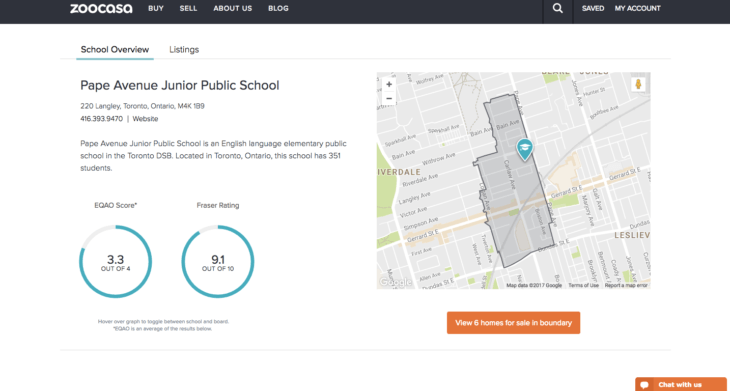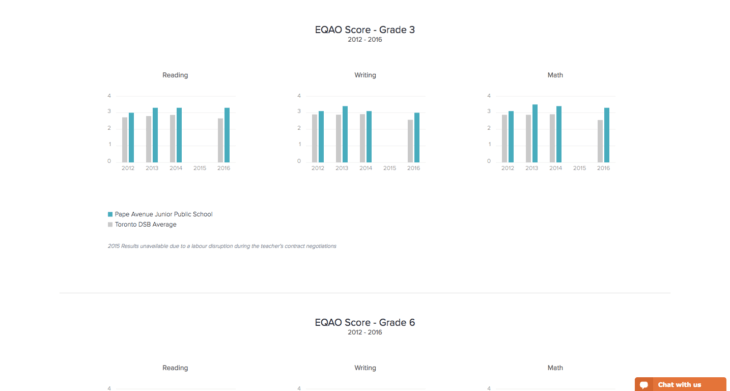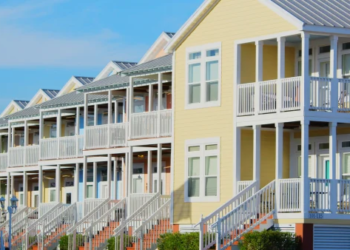There are still a few weeks left of summer, and most of us are loathe to give up our flip flops and beach days. But, the reality is that autumn – and back to school season – is just around the corner. September will soon enough usher out summer’s dog days for crisper weather and a refreshed focus – and the real estate market is no exception.
Following the hectic spring and January market peaks, back-to-school season is one of the most popular times to buy or sell a home. Those who had put their real estate ambitions on hold for summer vacation emerge from the woodwork; buyers may discover less competition and better choice, while sellers will find shoppers are more serious about closing the deal. Generally, everyone in the fall market wants to make their move before the holiday season – real estate’s slowest – sets in.
When Schools are a Top Consideration
But buying a home during back to school season can be stressful, especially for families with high education considerations. Buying in the fall can mean moving after classes have already started, or a mid-year change for kids. It means finding a home close to a child’s current or desired school is all the more important.
In fact, the quality of a neighbourhood’s schools is a top consideration for many Canadian home hunters: Zoocasa’s 2017 Housing Sentiment and Trends Report found it’s a main priority for 39 per cent of aspiring buyers.
Click here to check out the latest Toronto homes for sale
That consideration can be even greater for out-of-city or country buyers, says Zoocasa real estate agent Chantel Crisp. “For these buyers, they have a very high standard when it comes to schools – school first, then house,” she says. “When we’re in a buyer’s market like this, school districts are among the factors that will influence a purchase.”
However, choosing a home based on school district can add a whole new layer of complexity to your search. Here are a few considerations prospective buyers should keep in mind.
Choosing a Home Based on School District
1 – You’ll Pay a Premium to Live in a Great School District
In some cases, you may pay hundreds of thousands of dollars more to live in a neighbourhood with highly-ranked schools. That’s a not-insignificant chunk that can make or break a home buying budget. However, this premium can greatly differ depending on neighbourhood. For example, a Zoocasa analysis of home prices within Toronto’s top-rated districts compared with the city average found living near Etobicoke’s Lambton Kingsway Jr. Middle School commanded a premium of $821,580.
In comparison, those dwelling near Victoria Park Elementary School in East York would actually save $263,248, highlighting how important it is to research the impact schools can have on local real estate markets.
It’s for this reason that even buyers without kids often clamour to live in great school districts, as it can help ensure a home’s resale value and insulate it from market price shocks.
“It’s a good idea to be flexible. School districts within a 10 out of 10 Fraser rating can still be affordable,” Daniela Melo, Zoocasa real estate agent, says. “If parents are determined to be in that catchment, there are a variety of housing options they can look at.”
“It’s important that buyers do their research – school districts can change year over year, so they need the right information,” she adds.
Use Zoocasa’s school search tool to find homes and schools in your neighbourhood of choice.
2 – Double Check School Capacity
However, just because you own a home in a school district doesn’t guarantee your child’s attendance. In many urban markets, and especially in neighbourhoods with growing popularity, school capacity is limited. If your local school is unable to take on new students, that could mean your child is bussed out to other areas. To avoid any unpleasant surprises, it’s important to confirm with your local school board. For example, buyers who wish to attend Toronto public schools can confirm their address’s catchment on the Toronto District School Board’s website.
In areas with booming populations, like Toronto’s condo-crazy Yonge-Eglinton corridor, or the family-centric neighbourhood of Leslieville, some schools have even posted signs warning of closed catchments. This means they’ll only accept students from feeder institutions, and are closed to new enrolment.
3 – Look At (And Beyond) Standardized Testing
The success and quality of schools is determined in a few ways, including rankings and ratings from the Fraser Institute as well as the Education Quality and Accountability Office. These ratings are based on a school’s average reading, writing and math scores and can provide insight into how kids are performing at those institutes.
However, it’s important to consider other factors as well: does the school offer additional programs such as French immersion, extended arts, or International Baccalaureate programs? All of these will play into how a school affects the pricing of its surrounding neighbourhood.
Home buyers can use Zoocasa’s school search tool to browse:
- 3,825 Ontario elementary and 912 secondary school and 89 school districts
- Current and five-year historical (where available) EQAO and Fraser ranking data for each individual school, and the average ranking for school districts
- A “school cap” button on the real estate map that reveals school boundaries and the schools and property listings within them
- School information pages that include its contact information, ranking and ratings, the number of students and grade range, and an “expand” function to uncover the available listings within that district



















